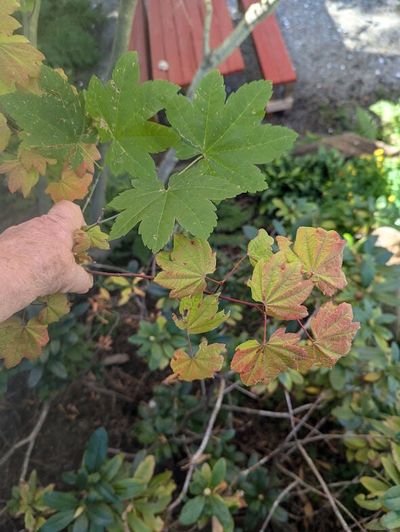Gardening: Past years’ unusual weather patterns have been hard on plants

I love fall. It’s my favorite time of the year. The cooler weather and return of the rain mean the garden work is winding down. It’s part of the cycle of nature but in the last few years things have been changing in ways that challenge my fall gardening routine.
I’ve gardened on the same piece of land since 1978 and have seen many crazy summers and winters, but the past five years have been different. The hotter summers that culminated in the record 2021 heat wave have repeatedly stressed plants. Our fall temperatures have stayed in the ’70s well into late October and frosts have been late if at all by then. The past two falls, snow and freezing temperatures settled in over a weekend. As a result, plants didn’t get the signal it was time to go dormant.
Frost and colder temperatures trigger plants to begin shutting down for the year. Hormones tell the plant to begin pulling water and sugars down into their roots for storage. Chemicals in deciduous plants signal the leaves they are no longer needed and it’s time to fall off. Buds for next year’s growth form. When freezing weather shows up before this process can start, the water in the branches and buds freezes and because water expands when it freezes, the ice crystals break cell walls damaging the plant. While a plant can usually recover from minor, or infrequent freeze damage, repeated damage can lead to a slow decline or death of the plant. Add this together with the heat stress resulting from the extreme hot summers and we are seeing damage on a lot of plants. I can’t say what will happen this fall, but there are some things we can do to prepare for a repeat of the weather pattern.
First keep watering plants until we get a soaking rain or at least into early October. Water stressed plants, especially trees, are more prone to damage if they have been too dry. If you are going to dig and divide perennials or plant fall nursery sale finds, do it as soon as you can so the new plants have a chance to grow roots before it gets cold.
A lot of the damage we saw on roses, lavender and other perennials this spring was caused by the lack of snow cover during the subzero weather in January. Snow insulates plants. To help nature out this fall, mulch garden beds with three to four inches of shredded pine needles, leaves or compost paying close attention to new plantings and roses. Rake leaves and needles off garden beds and chop them up with a mower. Reapply the mulch back around the beds. Add extra mulch to new plantings of perennials and shrubs and mound a foot or more around rose roots to protect the graft point and the roots.
Shrubs sensitive to the cold like big leaf hydrangeas can be protected by surrounding them with burlap fence and filling the fenced area with shredded needles or leaves.